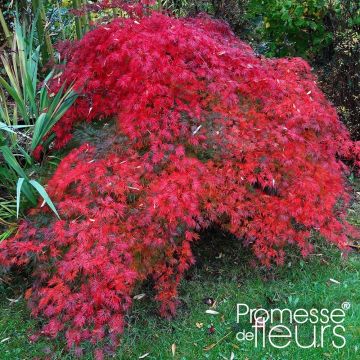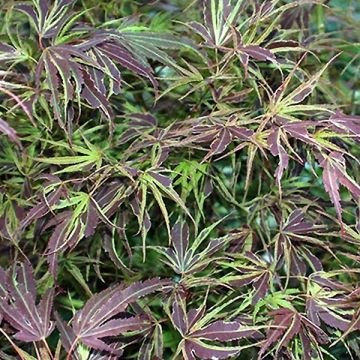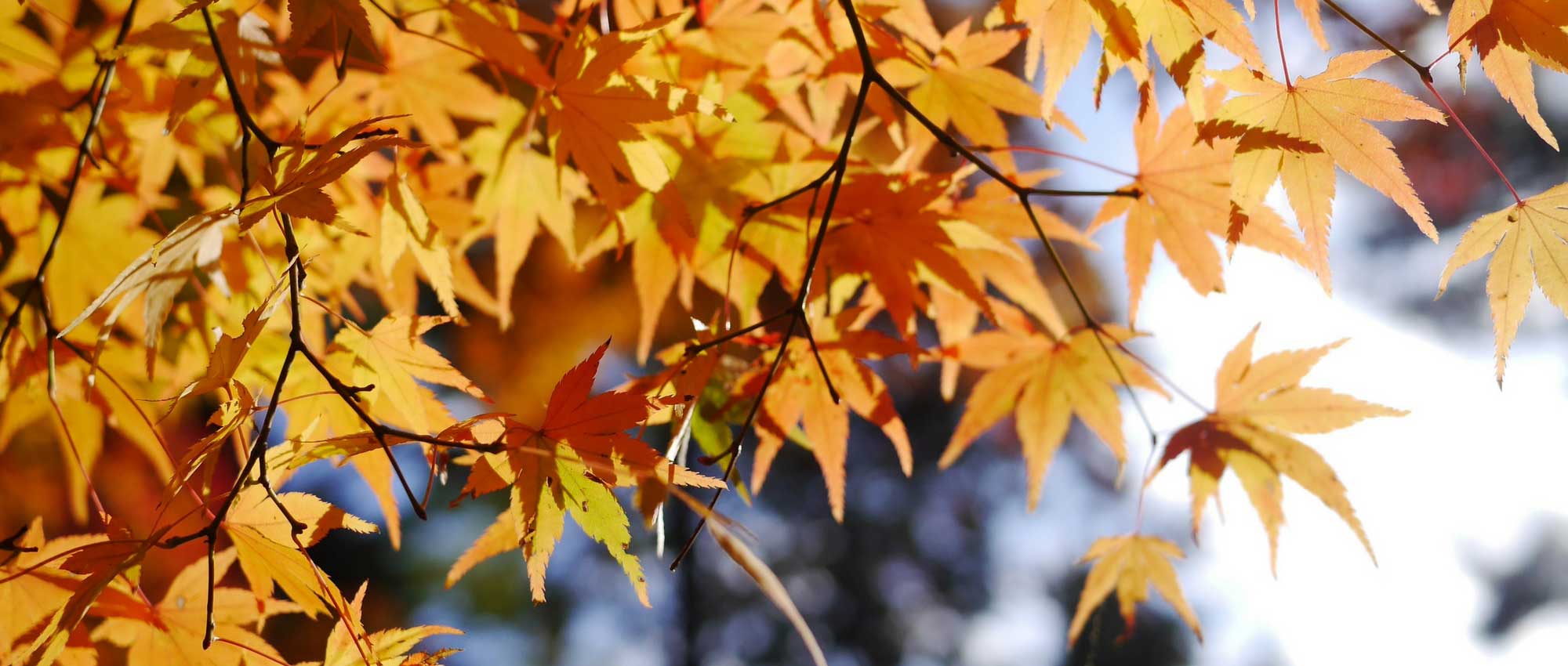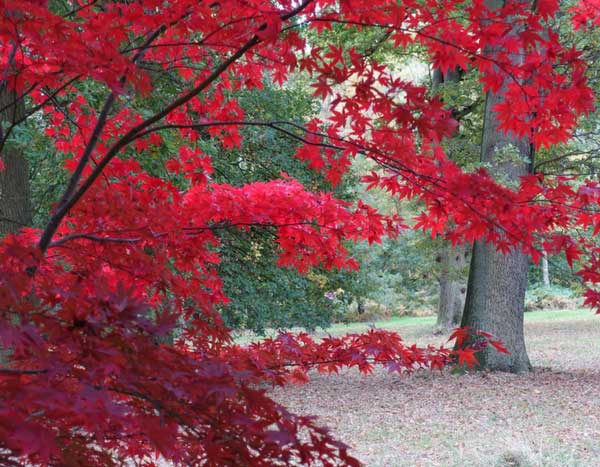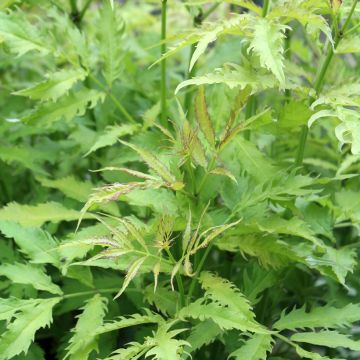

Erable du Japon - Acer palmatum Tsukasa Silhouette


Erable du Japon - Acer palmatum Tsukasa Silhouette


Erable du Japon - Acer palmatum Tsukasa Silhouette
Acer palmatum Tsukasa Silhouette - Japanese Maple
Acer palmatum Tsukasa Silhouette
Japanese Maple, Palmate Maple
Great young plant, already tall and very promising.
Nath44, 03/01/2025
Special offer!
Receive a €20 voucher for any order over €90 (excluding delivery costs, credit notes, and plastic-free options)!
1- Add your favorite plants to your cart.
2- Once you have reached €90, confirm your order (you can even choose the delivery date!).
3- As soon as your order is shipped, you will receive an email containing your voucher code, valid for 3 months (90 days).
Your voucher is unique and can only be used once, for any order with a minimum value of €20, excluding delivery costs.
Can be combined with other current offers, non-divisible and non-refundable.
Why not try an alternative variety in stock?
View all →This plant carries a 24 months recovery warranty
More information
We guarantee the quality of our plants for a full growing cycle, and will replace at our expense any plant that fails to recover under normal climatic and planting conditions.

Would this plant suit my garden?
Set up your Plantfit profile →
Description
Acer palmatum 'Tsukasa Silhouette' is a rarity among Japanese maples, due to its distinctly columnar habit, which surprises enthusiasts of the genus. This very erect small tree reaches up to 5m (16ft) in height without exceeding 1m (3ft) in width. Its beautiful palmate foliage is green during the growing season and turns red in autumn. Like other varieties, it does not tolerate limestone and requires slightly moist, neutral to acidic soil to grow well. It can be exposed to morning sun, but must be protected from afternoon sun. The dappled shade of tall trees will therefore benefit it, as it maintains a certain atmospheric humidity.
Native to eastern China, Korea, and Japan, Acer palmatum is the origin of a multitude of horticultural varieties that compete in beauty. Like all maples, it belongs to the Sapindaceae family (formerly Aceraceae). This important family includes about 140 plant genera, among which are tropical fruit species (lychee, rambutan, longan), as well as some ornamental plants in more temperate climates, such as the classic Koelreuteria and Xanthoceras. In its natural habitat, it forms small trees with a graceful habit and highly dissected palmate leaves, composed of 5 to 7 lobes, arranged in opposition on fine branches. Highly appreciated for its foliage, it has been cultivated for several hundred years in Japan, in gardens or trained as bonsai.
The cultivar 'Tsukasa Silhouette' is a variety of Japanese origin, discovered by Yutaka Kanata in the Tsukasa nursery. It was then named by nurseryman Tsukasa Silhouette due to its very unique morphology, as this Japanese maple is columnar, which makes it a rarity in this group, where most varieties have a spreading habit. Of (relatively) fast growth, it reaches about 3m (10ft) in height after 10 years, and 5 to 6m (16 to 20ft) when fully grown, with a width of 1 to 1.5m (3 to 5ft), which gives it a unique silhouette among Japanese maples. Its foliage consists of highly dissected palmate leaves with 5 toothed lobes. In spring, the young foliage is chartreuse green, turning to a more pronounced green in summer before the autumnal climax. The entire leafy column then turns crimson red, or in shaded situations, a bright orange, offering a superb spectacle before the leaves fall.
Acer palmatum 'Tsukasa Silhouette' is not strictly speaking an ericaceous plant; its optimal pH range is from about 5 to 7 (from acidic to neutral). It prefers humus-rich soils that remain moist, but not limestone soils as it may develop chlorosis. It is sensitive to atmospheric dryness and thrives in oceanic climates, provided it is protected from wind and afternoon sun. Elsewhere, it is advisable to ensure a certain humidity by planting it on the edge of trees, mulching the soil above its roots, and monitoring watering, especially in summer. In hot and sunny climates, it can even be planted in shaded understory conditions to ensure a certain atmospheric humidity.
Very hardy, down to about -22°C (-7.6°F), its small size allows it to be planted anywhere, except in excessively hot and dry climates where its foliage may suffer.
It is perfect for small gardens and can be planted in flower beds alongside other plants. It blends perfectly into a Japanese-style garden, as well as in a contemporary environment thanks to its particularly sculptural habit and foliage. Its green and then red column can thus harmonise with plants shaped in topiaries, such as Ilex crenata 'Golden Gem', a small thornless holly with yellow-green foliage that can easily be pruned and maintained in a ball shape. This creates a double contrast of shapes and colours. To achieve an unforgettable autumn scene, plant this maple next to yellow-coloured shrubs, such as Clethra alnifolia, which shares the same cultural requirements and forms a medium-sized shrub appreciated for its spikes of small white flowers and its yellow foliage in autumn. And of course, all the classic acid-loving plants can be planted in flower beds with 'Tsukasa Silhouette', such as numerous Hydrangeas, like the charming Hydrangea serrata 'Avelroz' with pink flowers in June-July, sometimes reblooming in September, Camellias, and many others.
Acer palmatum Tsukasa Silhouette - Japanese Maple in pictures




Plant habit
Flowering
Foliage
Botanical data
Acer
palmatum
Tsukasa Silhouette
Sapindaceae (Aceraceae)
Japanese Maple, Palmate Maple
Cultivar or hybrid
Other Japanese Maples
View all →Planting and care
Plant in spring or autumn in preferably acidic, moist but not wet, deep, loose, and well-drained soil. It should be placed in a partially shaded or even shaded position in hot climates, and protected from cold and dry winds. Soak the root ball in a bucket of water for fifteen minutes before planting. Dig a hole of 50cm (20in) in all directions, mix an acidic planting compost such as ericaceous soil with the existing soil.
The Verticillium disease, which affects many Japanese maples, will develop less easily in substrates that dry out between waterings, which this variety tolerates very well. Apply a significant amount of organic matter every three years to ensure good soil humus content. Mulch the soil if necessary and spray the foliage on hot evenings. Winter pruning is limited to balancing the branches. Treat against scale insects and Verticillium.
Planting period
Intended location
Care
Planting & care advice
-
, onOrder confirmed
Reply from on Promesse de fleurs
Similar products
Haven't found what you were looking for?
Hardiness is the lowest winter temperature a plant can endure without suffering serious damage or even dying. However, hardiness is affected by location (a sheltered area, such as a patio), protection (winter cover) and soil type (hardiness is improved by well-drained soil).

Photo Sharing Terms & Conditions
In order to encourage gardeners to interact and share their experiences, Promesse de fleurs offers various media enabling content to be uploaded onto its Site - in particular via the ‘Photo sharing’ module.
The User agrees to refrain from:
- Posting any content that is illegal, prejudicial, insulting, racist, inciteful to hatred, revisionist, contrary to public decency, that infringes on privacy or on the privacy rights of third parties, in particular the publicity rights of persons and goods, intellectual property rights, or the right to privacy.
- Submitting content on behalf of a third party;
- Impersonate the identity of a third party and/or publish any personal information about a third party;
In general, the User undertakes to refrain from any unethical behaviour.
All Content (in particular text, comments, files, images, photos, videos, creative works, etc.), which may be subject to property or intellectual property rights, image or other private rights, shall remain the property of the User, subject to the limited rights granted by the terms of the licence granted by Promesse de fleurs as stated below. Users are at liberty to publish or not to publish such Content on the Site, notably via the ‘Photo Sharing’ facility, and accept that this Content shall be made public and freely accessible, notably on the Internet.
Users further acknowledge, undertake to have ,and guarantee that they hold all necessary rights and permissions to publish such material on the Site, in particular with regard to the legislation in force pertaining to any privacy, property, intellectual property, image, or contractual rights, or rights of any other nature. By publishing such Content on the Site, Users acknowledge accepting full liability as publishers of the Content within the meaning of the law, and grant Promesse de fleurs, free of charge, an inclusive, worldwide licence for the said Content for the entire duration of its publication, including all reproduction, representation, up/downloading, displaying, performing, transmission, and storage rights.
Users also grant permission for their name to be linked to the Content and accept that this link may not always be made available.
By engaging in posting material, Users consent to their Content becoming automatically accessible on the Internet, in particular on other sites and/or blogs and/or web pages of the Promesse de fleurs site, including in particular social pages and the Promesse de fleurs catalogue.
Users may secure the removal of entrusted content free of charge by issuing a simple request via our contact form.
The flowering period indicated on our website applies to countries and regions located in USDA zone 8 (France, the United Kingdom, Ireland, the Netherlands, etc.)
It will vary according to where you live:
- In zones 9 to 10 (Italy, Spain, Greece, etc.), flowering will occur about 2 to 4 weeks earlier.
- In zones 6 to 7 (Germany, Poland, Slovenia, and lower mountainous regions), flowering will be delayed by 2 to 3 weeks.
- In zone 5 (Central Europe, Scandinavia), blooming will be delayed by 3 to 5 weeks.
In temperate climates, pruning of spring-flowering shrubs (forsythia, spireas, etc.) should be done just after flowering.
Pruning of summer-flowering shrubs (Indian Lilac, Perovskia, etc.) can be done in winter or spring.
In cold regions as well as with frost-sensitive plants, avoid pruning too early when severe frosts may still occur.
The planting period indicated on our website applies to countries and regions located in USDA zone 8 (France, United Kingdom, Ireland, Netherlands).
It will vary according to where you live:
- In Mediterranean zones (Marseille, Madrid, Milan, etc.), autumn and winter are the best planting periods.
- In continental zones (Strasbourg, Munich, Vienna, etc.), delay planting by 2 to 3 weeks in spring and bring it forward by 2 to 4 weeks in autumn.
- In mountainous regions (the Alps, Pyrenees, Carpathians, etc.), it is best to plant in late spring (May-June) or late summer (August-September).
The harvesting period indicated on our website applies to countries and regions in USDA zone 8 (France, England, Ireland, the Netherlands).
In colder areas (Scandinavia, Poland, Austria...) fruit and vegetable harvests are likely to be delayed by 3-4 weeks.
In warmer areas (Italy, Spain, Greece, etc.), harvesting will probably take place earlier, depending on weather conditions.
The sowing periods indicated on our website apply to countries and regions within USDA Zone 8 (France, UK, Ireland, Netherlands).
In colder areas (Scandinavia, Poland, Austria...), delay any outdoor sowing by 3-4 weeks, or sow under glass.
In warmer climes (Italy, Spain, Greece, etc.), bring outdoor sowing forward by a few weeks.
































